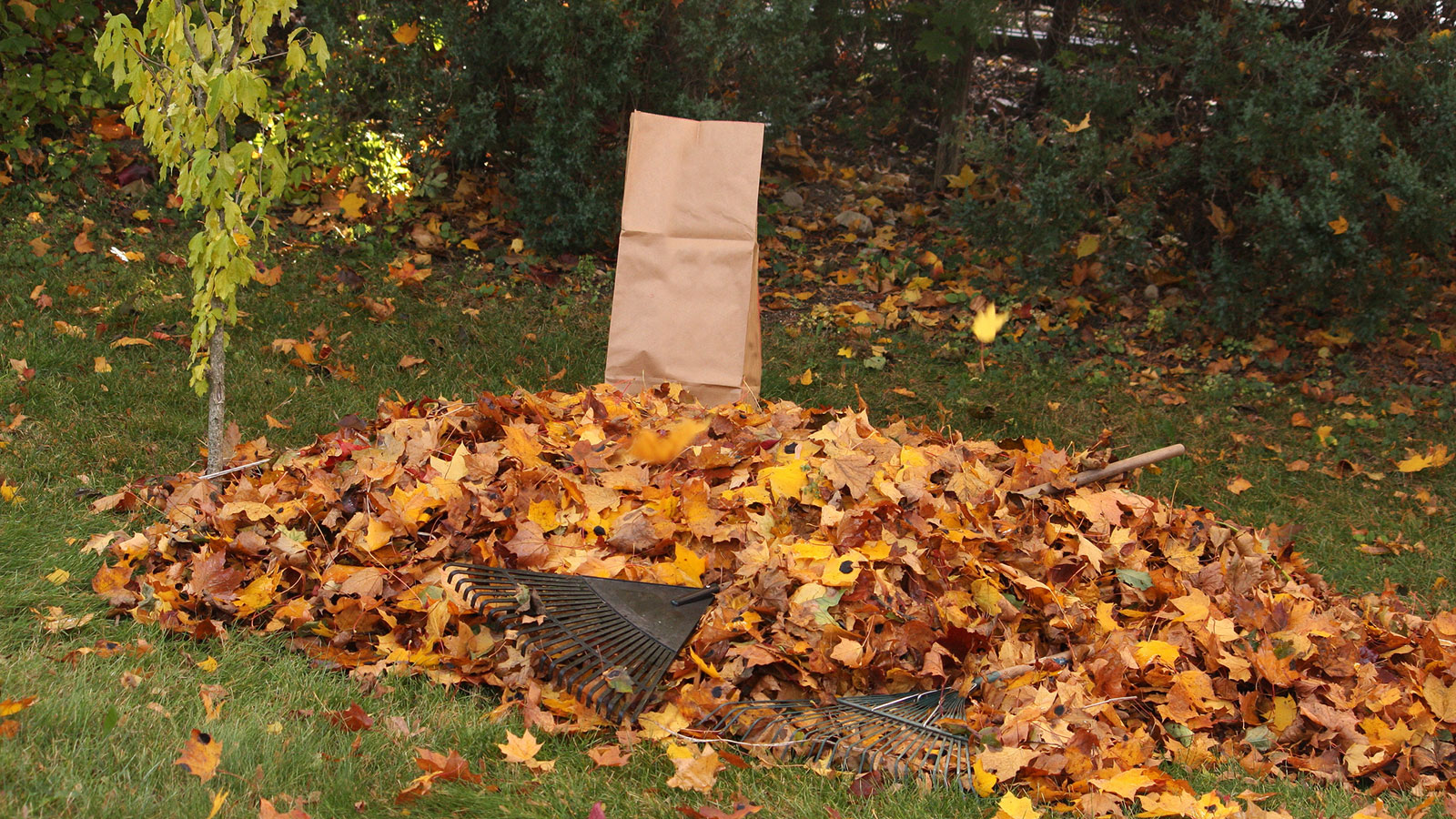To rake leaves into a bag, start by using a sturdy rake to gather leaves into a pile. Then, use a leaf bag or a trash bag to scoop the leaves and secure them tightly.
Raking leaves is a seasonal chore that many homeowners face. It keeps yards tidy and prevents damage to grass and plants. Using the right technique can make this task efficient and easy. Understanding how to rake leaves into a bag not only simplifies cleanup but also promotes healthy outdoor spaces.

Credit: www.angi.com
A few simple steps can turn a daunting job into a manageable one. This guide will help you master the art of leaf raking, ensuring you make the most of your time outdoors while keeping your yard looking pristine. Embrace the autumn season with confidence!
How to Rake Leaves into a Bag : Step by Step Guide
Introduction To Leaf Raking
Leaf cleanup is very important for a healthy yard. Timely removal of leaves helps your grass breathe. It also prevents pests and diseases from spreading. A clean yard looks neat and welcoming.
Choosing the right tools makes leaf raking easier. Rakes come in many sizes and shapes. A wide rake covers more ground quickly. Leaf bags are essential for easy disposal. Some people use a tarp to gather leaves before bagging.
Consider using a leaf blower for larger areas. This tool saves time and effort. Always wear gloves to protect your hands. Enjoy the fresh air while keeping your yard tidy!
Preparation For Leaf Raking
Choosing the right bag is essential for leaf raking. Look for a durable bag made of strong material. Size matters too; a larger bag holds more leaves. Consider bags with handles for easier lifting.
Wearing the appropriate attire is important. Dress in comfortable clothing that allows easy movement. Gloves protect your hands from cuts and dirt. Sturdy shoes prevent slips and provide support. A hat shields you from sun or rain.
Techniques For Efficient Raking
Pattern raking helps collect leaves faster. Start at one end of the yard. Rake in a zigzag pattern. This method gathers more leaves in less time. Move quickly from one side to the other.
Wet leaves can be tricky. They stick together and are heavy. Use a sturdy rake for this task. Try raking in small sections. This keeps the leaves manageable. If leaves are really wet, wait for a sunny day. Dry leaves are easier to bag.
Filling The Bag
For proper bag placement, choose a flat, stable surface. This helps prevent spills. Place the bag near the leaves but not too close. Aim to avoid overreaching while filling.
To maximize bag space, compress the leaves as you fill. Start by adding a small amount. Then, push down to fit more. Filling the bag tightly can hold more leaves. Don’t overfill, as this makes lifting difficult.
Using a large bag can also help. It holds more leaves and reduces trips. Consider using a tarp to gather leaves first. Then, transfer them into the bag easily.
Using Leaf Blowers And Vacuums
Choosing between a leaf blower and a vacuum can be tricky. A blower is great for moving leaves quickly. It works well on large areas. Blowers can blow leaves into piles easily.
A vacuum collects leaves and shreds them. This makes it easier to dispose of them. Vacuums are perfect for smaller areas or tight spaces.
For effective use, hold the blower at a slight angle. This helps direct the leaves better. Always wear safety goggles and a mask to protect yourself. Make sure to check the weather before starting.
Using a vacuum? Start from one corner and move slowly. Empty the bag regularly for best results. Always follow the manufacturer’s instructions for safety.

Credit: www.reddit.com
Eco-friendly Leaf Disposal
Composting leaves is a great way to recycle. It reduces waste and enriches soil. Start by collecting dry leaves in a compost bin. Turn the leaves regularly to speed up the process. After a few months, you’ll have nutrient-rich compost.
Mulching is another eco-friendly option. Use a mulching mower to chop leaves into small pieces. This helps them break down faster. Spread the chopped leaves on your garden. They provide natural nutrients and help retain moisture.
| Method | Benefits |
|---|---|
| Composting | Reduces waste and enriches soil |
| Mulching | Provides nutrients and retains moisture |
Safety Tips
To avoid repetitive strain injuries, take breaks often. Change tasks every 30 minutes. Stretch your arms and legs regularly. This helps keep muscles relaxed and ready.
Use proper lifting techniques to protect your back. Bend your knees, not your back, when lifting. Keep the bag close to your body. Lift with your legs, not your back. If the bag is too heavy, ask for help.
Final Tips And Tricks
Check local leaf disposal laws before bagging leaves. Some areas have specific rules. Follow these laws to avoid fines. Many towns offer leaf collection services during autumn.
For storing equipment for next season, clean all tools after use. Remove dirt and debris from rakes and bags. Store equipment in a dry place to prevent rust. Keeping tools organized helps find them easily next year. Label storage bins for quick access.

Credit: m.youtube.com
Frequently Asked Questions
How Do I Rake Leaves Efficiently?
To rake leaves efficiently, choose the right tools and techniques. Use a wide rake for faster collection. Work in sections, starting from one end of your yard. Rake towards a central pile for easy bagging. Consider using a leaf blower for larger areas to save time.
What Type Of Rake Is Best For Leaves?
A leaf rake with a flexible head is ideal for collecting leaves. Look for one with a wide, lightweight design for easy maneuverability. Plastic rakes are effective for dry leaves, while metal rakes work well for wet leaves. Choose a rake that suits your yard’s size and leaf volume.
How Do I Bag Leaves After Raking?
After raking, gather leaves into manageable piles. Use a tarp to transport them easily if needed. For bagging, make sure your bags are sturdy and large enough. Fill the bags to about three-quarters full for easy handling. Seal the bags securely to prevent spillage.
When Is The Best Time To Rake Leaves?
The best time to rake leaves is in the fall when most leaves have fallen. Raking after a windstorm can also be effective, as it often gathers more leaves in one area. Regular raking helps prevent leaves from becoming wet and matted, making disposal easier.
Conclusion
Raking leaves can be a satisfying task that keeps your yard tidy. Following the right techniques makes the process easier and more efficient. Remember to choose the right tools and plan your approach. With these tips, you’ll enjoy a clean yard and a sense of accomplishment every autumn.
Happy raking!

